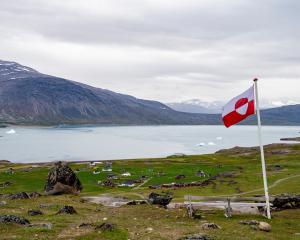
Hoiho (yellow-eyed penguins) are a locally iconic species on track to become extinct on the South Island and Rakiura over the next few decades.
Recent articles in the Otago Daily Times have highlighted the hoiho's plight, outlining the multiple threats these penguins face, and the work that the Department of Conservation (Doc) and the Yellow-eyed Penguin Trust is doing to address these threats.
While we applaud Doc for its commitment to predator control, disease and injury treatment and starvation interventions, we suggest that rehabilitating penguins and sending them back out into the marine environment is akin to patching up soldiers and sending them back to the front.
Why? Because the most significant unmanaged threats are almost all marine-based. On top of the stress of searching for diminishing food sources is the threat of drowning in fishing nets.
While solutions to climate-change-induced declines in hoiho food supply are beyond us at the local scale, fishery-related bycatch is something we can address.
The YEP Trust and researchers at the University of Otago have been calling for a solution to the problem posed by bycatch for many years, but with no success.
A focus on restoration of local coastal ecosystems outlined in the ODT article by Aaron Fleming, the Department of Conservation Southern South Island Director of operations, will not slow down or halt the extinction trajectory of hoiho along the Otago and Southland coast.
More predator control and more vegetation planting does not address the drivers of declines on which
we can and should be focused.
Both of us have been involved in hoiho research for over 40 years.
We started our respective PhD projects on hoiho in the early 1980s. At that time John Darby, then of the Otago Museum, had restarted the long-term study of hoiho on the mainland that was initiated in the 1930s by the Otago conservation pioneer Lance Richdale.
John was a tireless champion for the penguins and enthused many people around him to pay attention to this taonga species.
Much of our work was focused on the Otago Peninsula because of the large numbers of nesting penguins there at that time.
We have records of the numbers of nests that we were regularly checking. Just in the Boulder Beach area, between the high cliffs of Highcliff and Sandfly Bay, there were over 120 breeding pairs of penguins. Further south, at Nugget
Point in the Catlins, there were at least 50 breeding pairs. Finding and checking the hundreds of chicks produced from those nests took days.
In the most recent breeding season Boulder Beach held a miserable 10 pairs and produced only five chicks, while Nugget Point had none. What happened?
Back in the 1980s the significant threats to hoiho were predation, by ferrets in particular, but also cats and stoats, as well as a lack of nesting habitat, hoiho need enough vegetation for their secluded and shaded nests.
Predator control through trapping and the protection and revegetation of coastal habitats were the two prongs of penguin management initiated at that time, and which have continued to the present.
Loss of chicks to predators is now relatively rare, and large areas of coastal vegetation have been restored and lie ready to receive the nesting penguins that are no longer there.
Fast-forward to the 2010s and intensive monitoring revealed a sharp and sustained drop in nest numbers despite this on-land management, and more recently exacerbated by the emergence of new diseases.
Modelling by penguin researchers in 2017 predicted that, at the rate at which the populations were declining, the penguins could disappear from the mainland by 2048.
The modelling estimated that about a third of the ongoing decline could be attributed to climatic changes in the ocean, driving changes in marine productivity, but that there remained some threat factors that could be managed to sustain penguin populations and increase their resilience in the face of increasing pressure from climate change.
One of those is eliminating fisheries-related bycatch.
Recent hoiho tracking studies by Rachel Hickcox and Melanie Young at the University of Otago have shown that bottom-set gillnetting, bottom contact trawling, and the deposition of dredged substrates all occur in the foraging areas of hoiho.
The penguins follow their prey and are largely unprotected from commercial fisheries by-catch risks while they do.
Even the pending South-East Marine Protected Area Network would overlap less than 4% of the hoiho mainland foraging areas and dispersing juvenile penguins gathering in the Canterbury Bight find themselves foraging in areas of high trawling intensity.
Little wonder there is high mortality. In some years, virtually none of the juveniles survive to become adults.
Two-thirds of the hoiho recorded as caught in set nets are adults, catastrophic for a tiny remnant population.
Less than 20% of all surviving chicks make it to breeding adulthood, so the loss of adults is dismaying.
In 2024 the last breeding female hoiho in Sandfly Bay was drowned in a set net, marking the extinction of this breeding area.
We must not give up on the mainland population.
For hoiho to remain on the coasts of Otago and Southland we need to be doing more than just the predator control and revegetation of the last 40 years.
We need to be serious about addressing the threats we can manage.
For sure, veterinary interventions to treat disease and starvation are essential to prop up the failing population, but the point of all this care cannot be to return healthy penguins to the seas to fill fishing nets.
These are hard conversations about a simple question, do we want to have hoiho as a wonderful, extraordinary part of our everyday life or will they become an attraction accessible only to wealthy sub-Antarctic tourists?
Philip Seddon and Yolanda van Heezik are University of Otago zoology professors.










